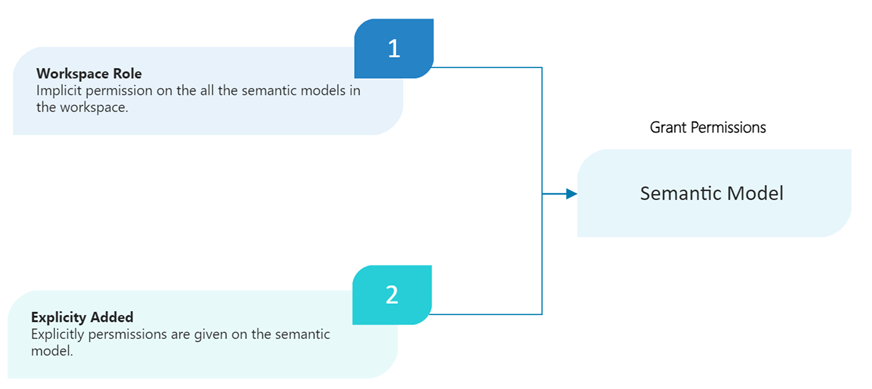Semantic Model (or Datasets) in Power BI Service
A semantic model is a container of data. It can contain data from multiple sources.
Step 1: Open the workspace where our semantic model is, click on the Semantic model.
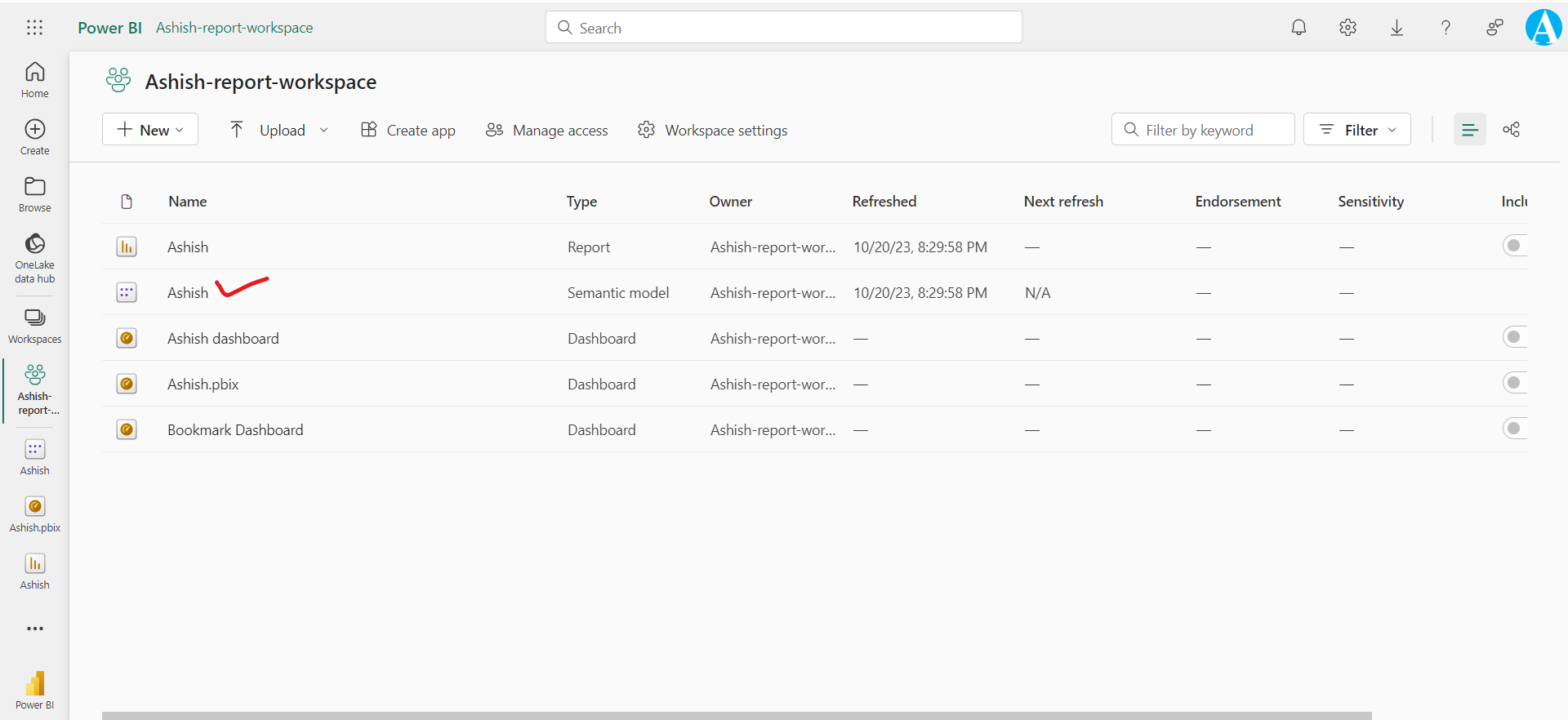
Step 2: We reach the semantic model details page:
• Shows us metadata about the semantic model, including the name of the workspace where the item is located, the exact time of the last refresh, Endorsement status and certifier (if certified), Sensitivity (if set), Description (if any). We can add (by clicking on + Add description) but not edit the description from here.

• Provides actions that we can perform on the semantic model, such as share, refresh, create new, Analyze in Excel, and more. • Lists the reports and scorecards that are built on top of the semantic model.
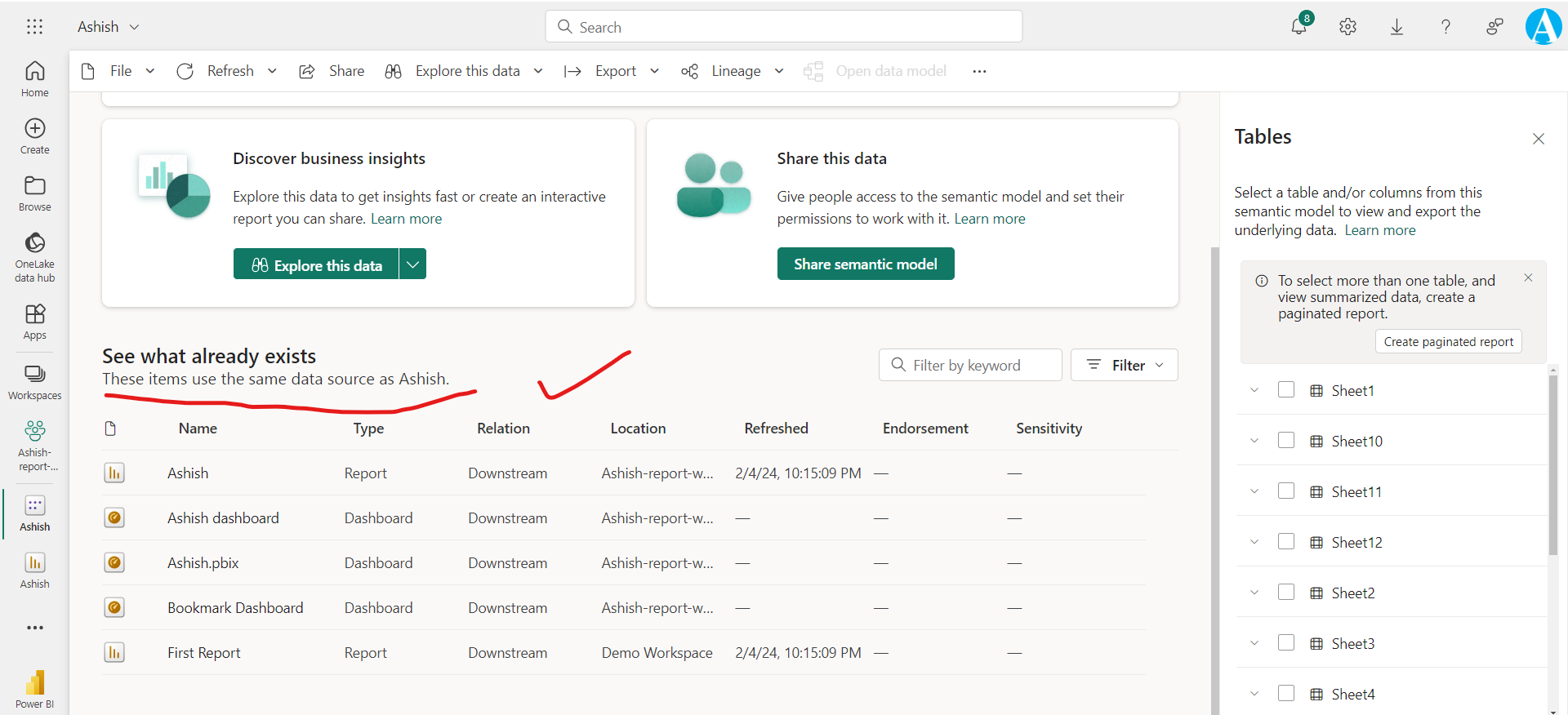
Step 3: Provide a semantic model description
To provide a description for a semantic model, go to semantic model's settings page, find the Semantic model description section, and enter the description in the text box. Select Apply to save the description.
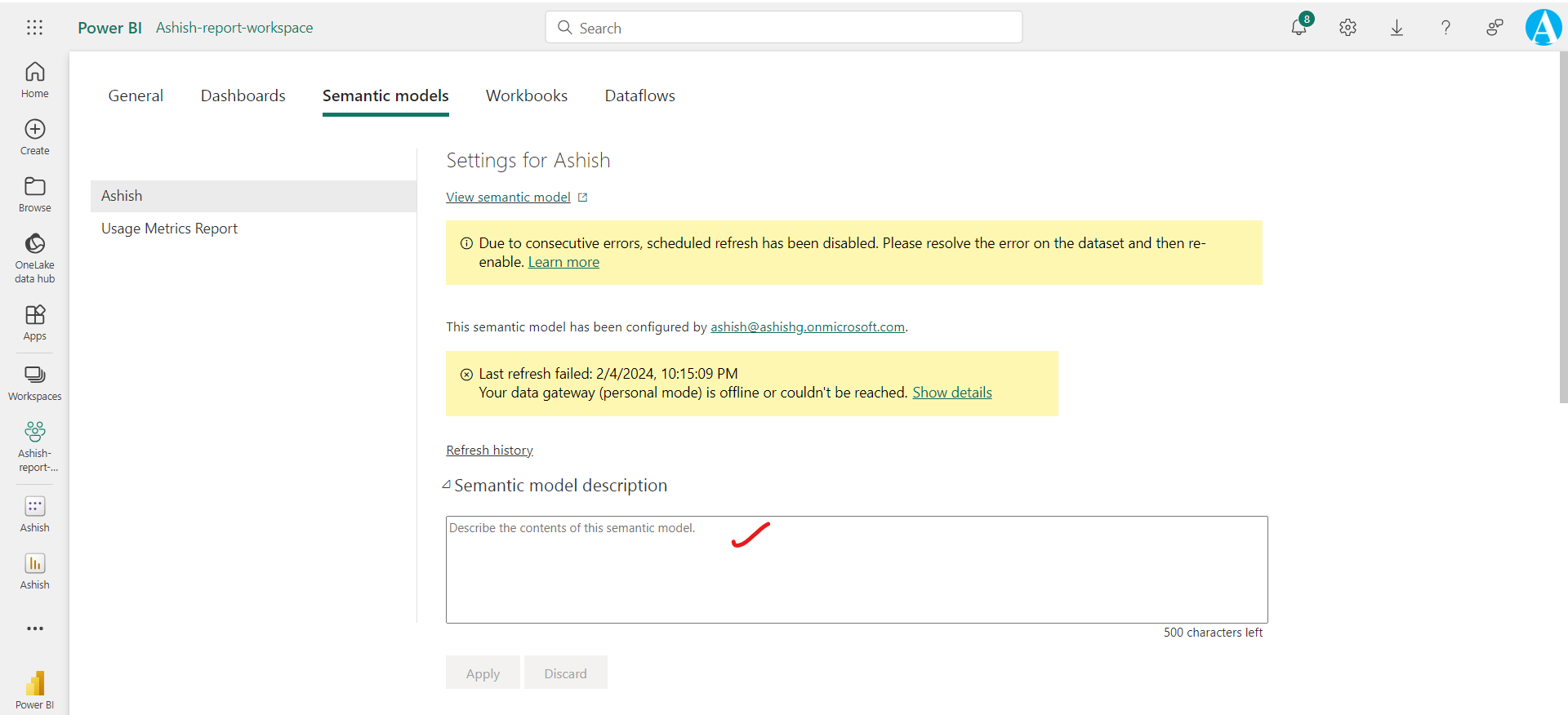
Step 4: By clicking on Explore this data, we can see the following screen where we can create the visual to test the data.
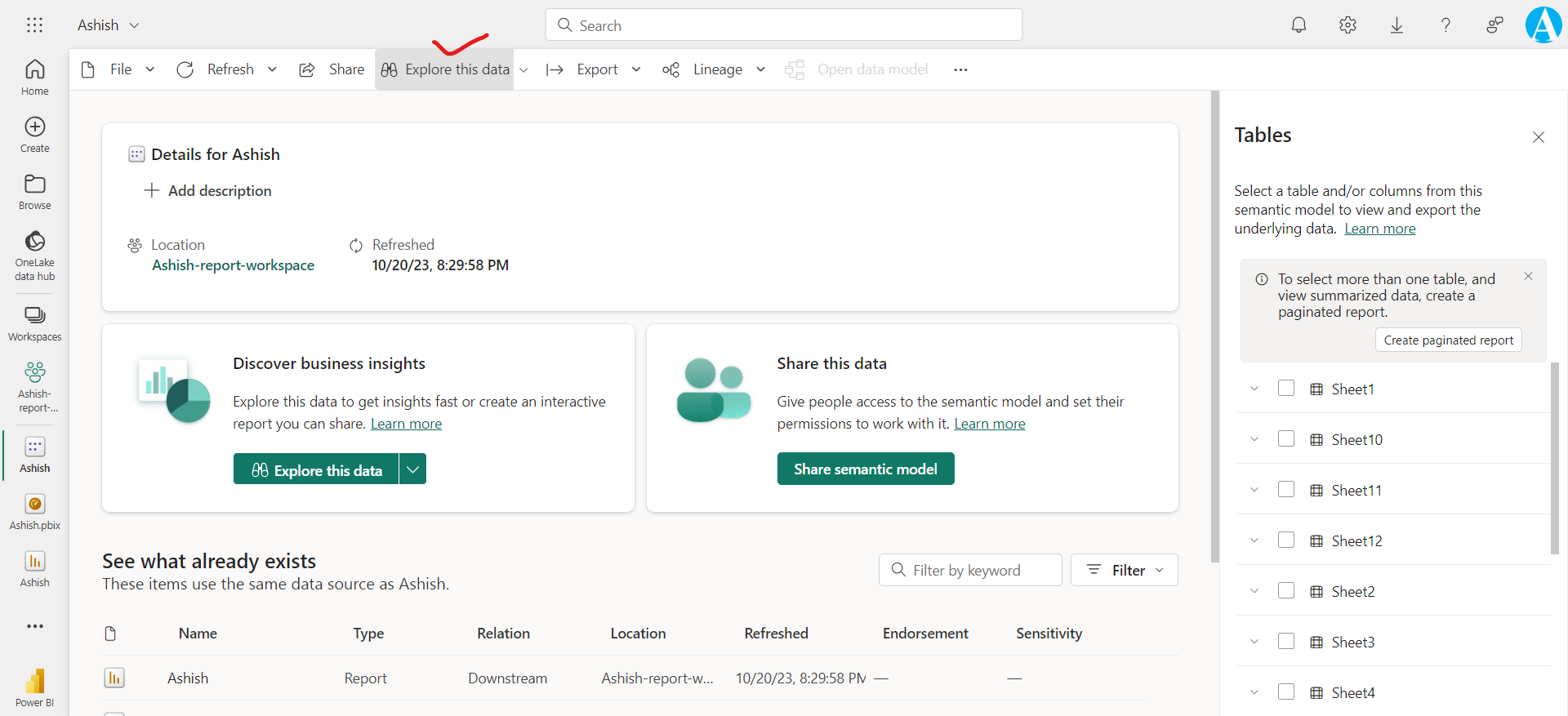
A dialog window opens where we can create the visuals and explore the data.
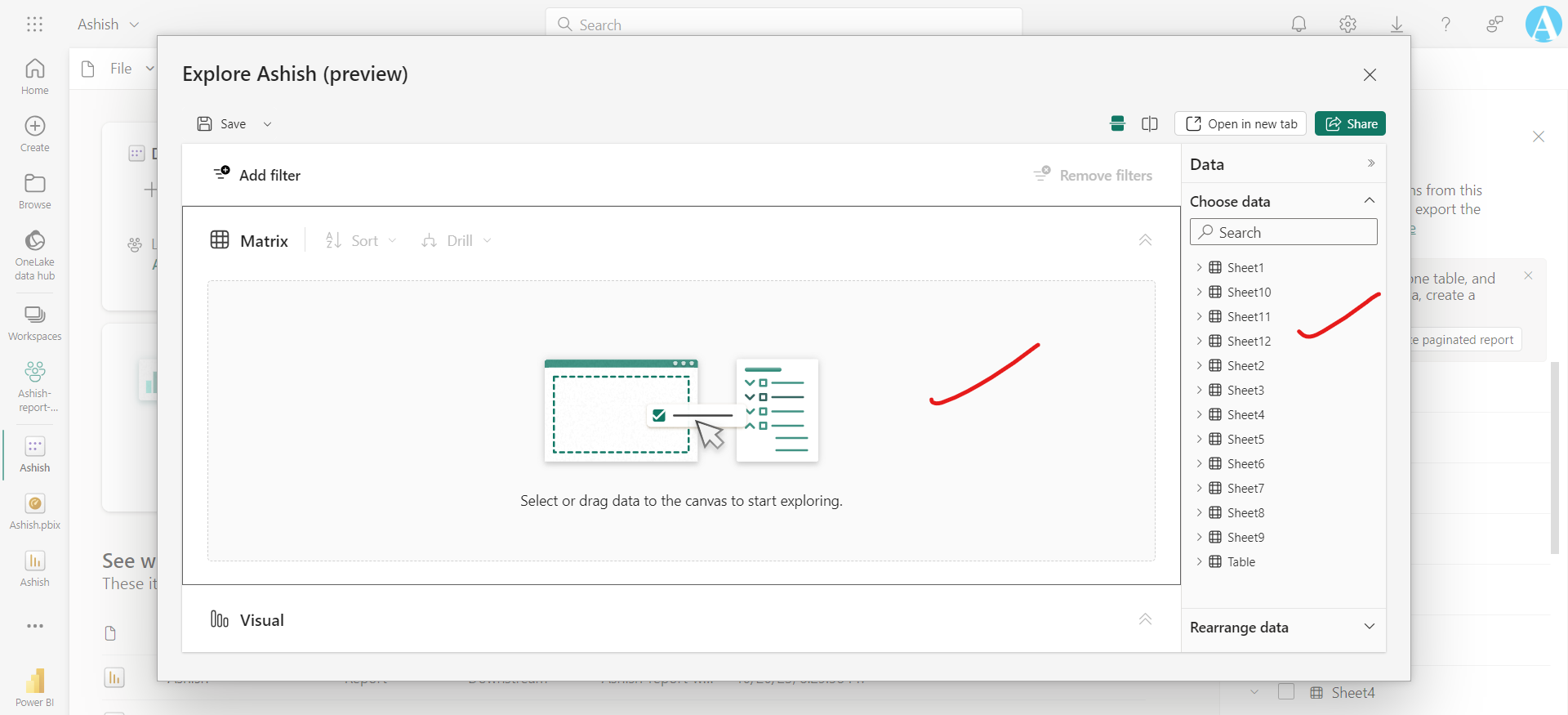
We can create the visuals from the data, as shown in the image below.
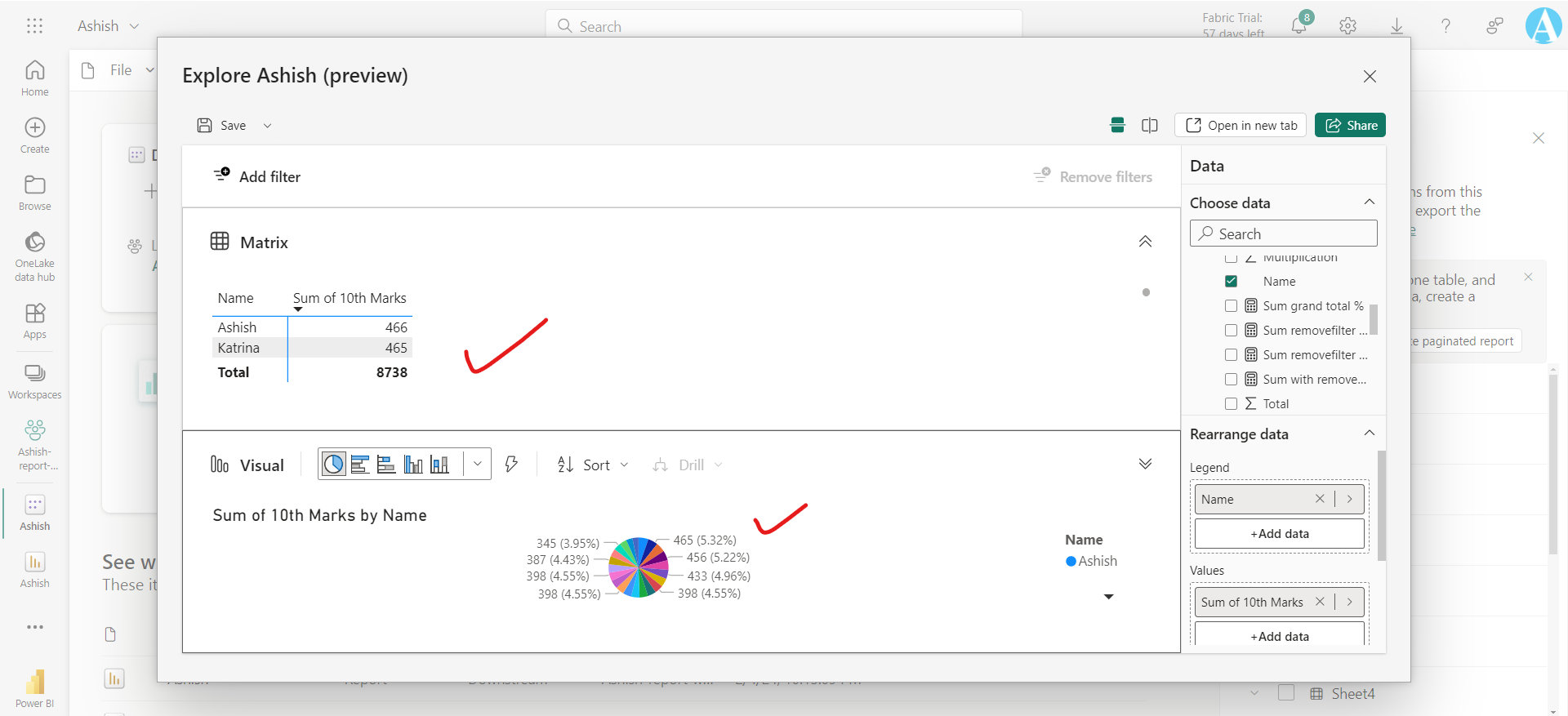
We also have the option to save as the report in the workspace.
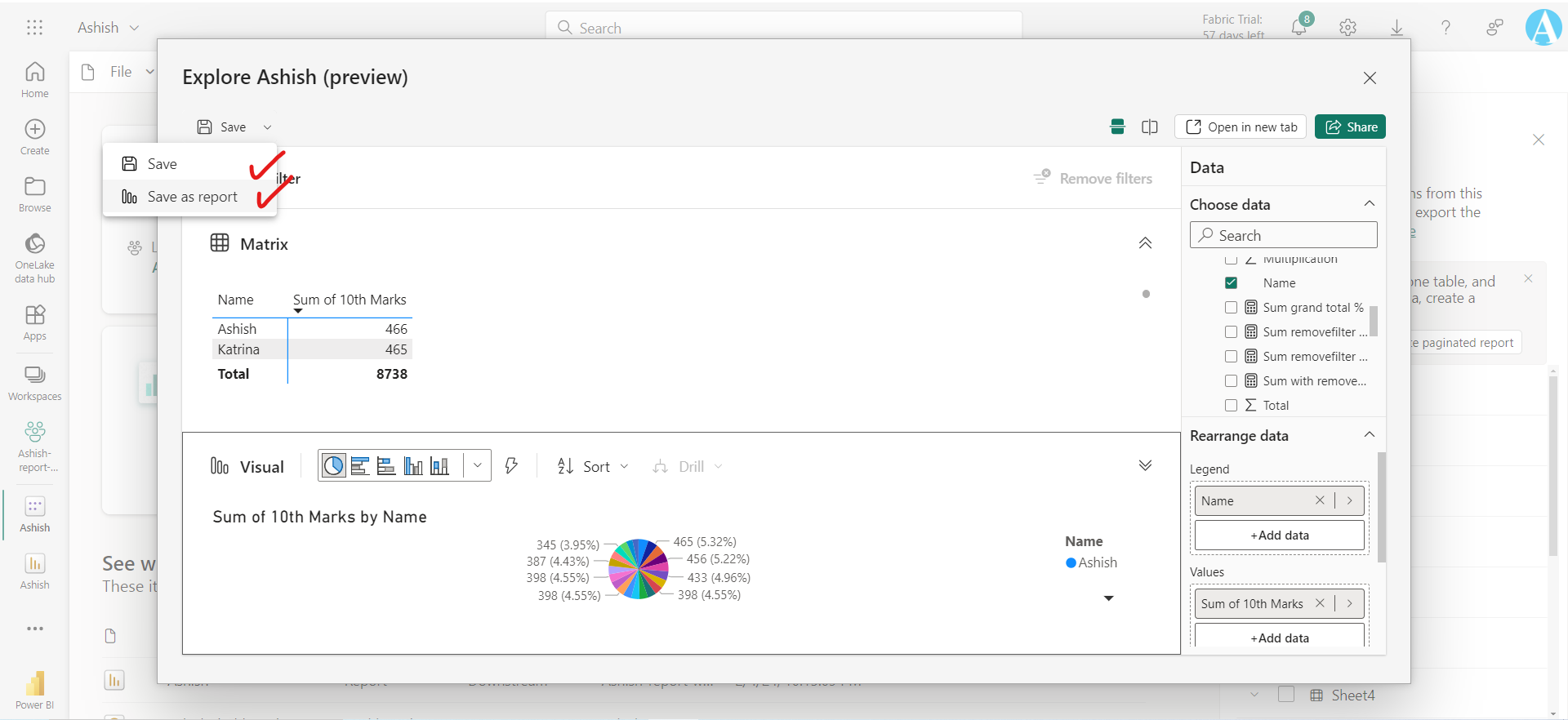
Step 5: When we click on the chevron next to the Explore this data, we can see three options. By using these we can create a report automatically by using Auto-create a report or we can create a blank report in the Power BI Service itself and add visuals in them as we do in Power BI Desktop by using Create a blank report. But microsoft recommend to use Power BI Desktop to create reports.
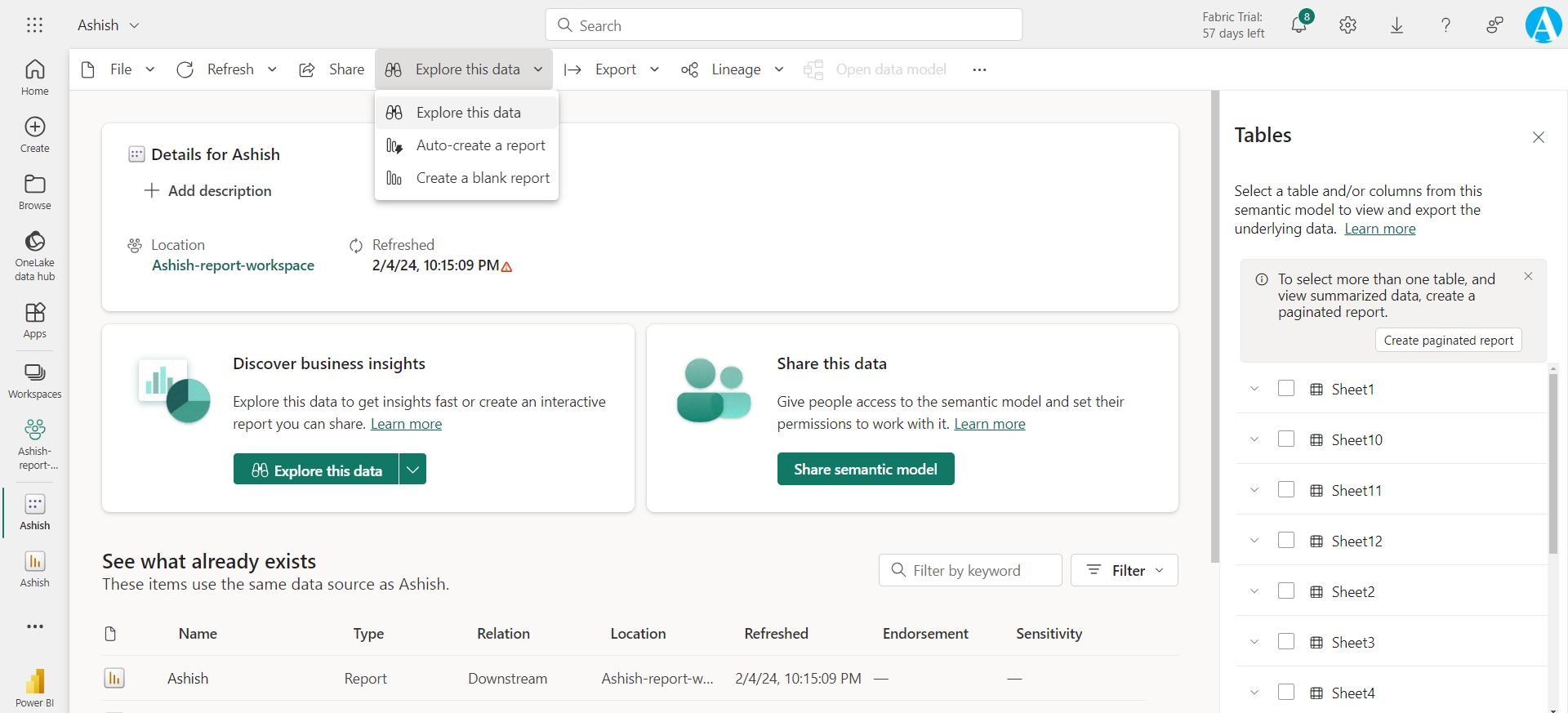
Step 6: Also, we can open the Data model in the Power BI Service itself, as we see the Data Model in the Power BI desktop, by clicking on Open data model. We can also make any change we wish to make in this.
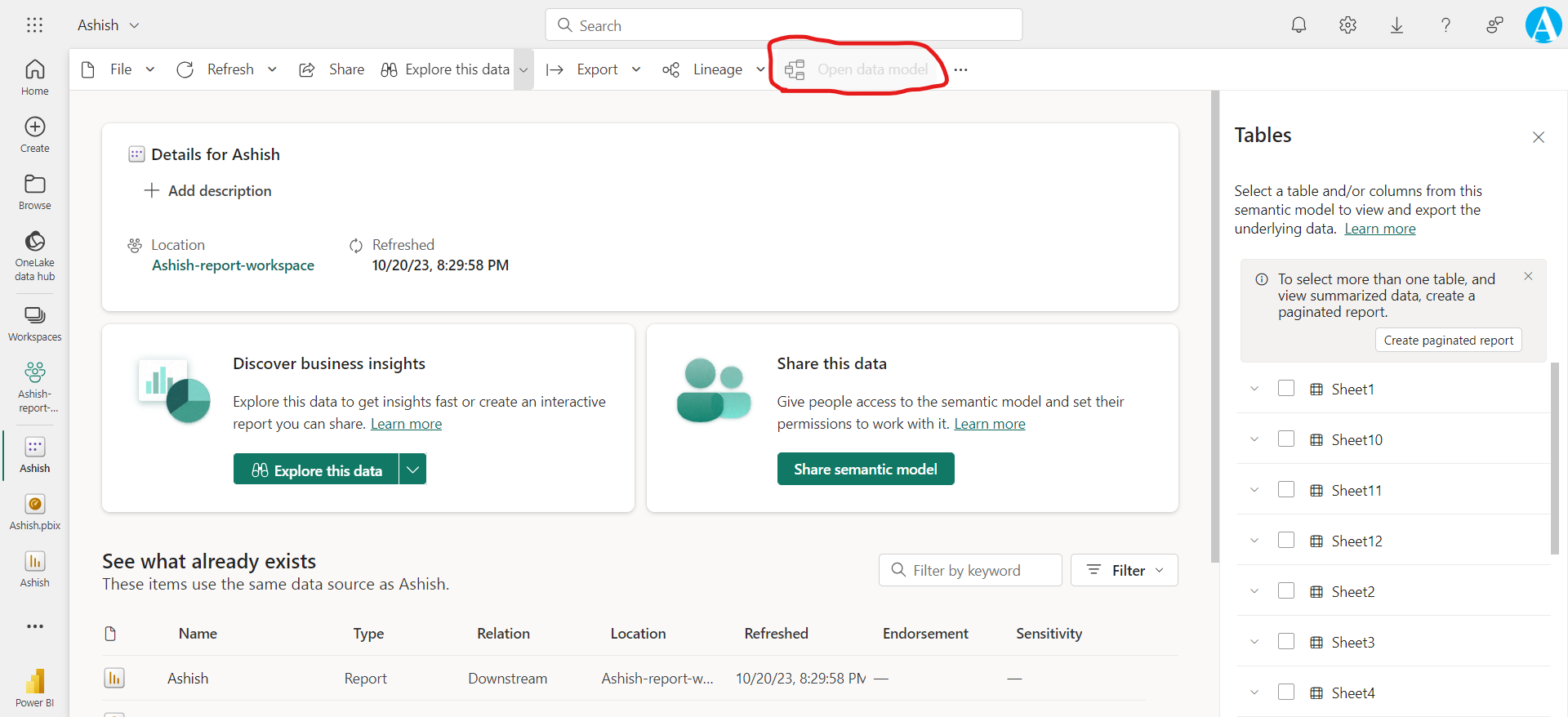
But right now, it is disabled, because we need to turn on this setting at the workspace level. From the Workspace settings pane, we can enable this setting.
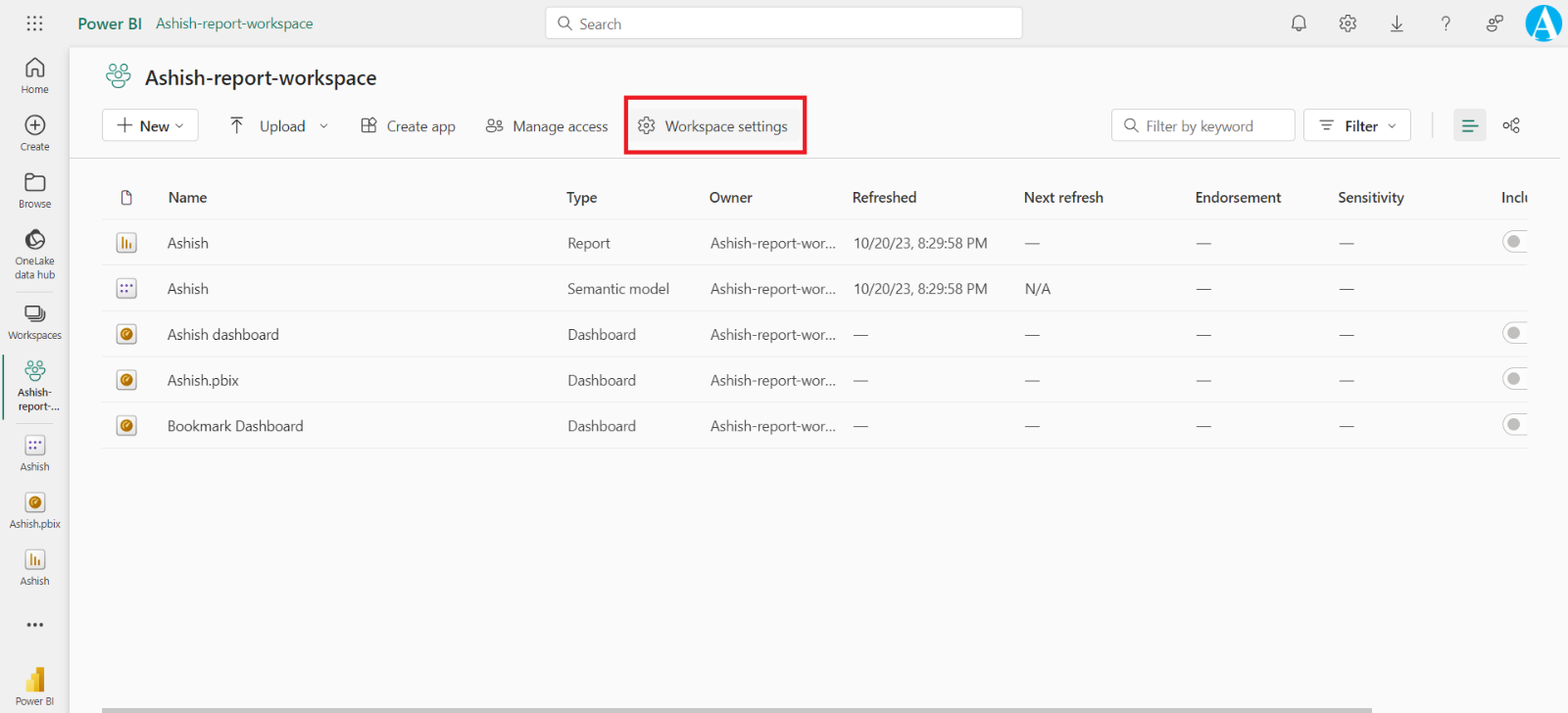
From the Data model settings section, we can enable or disable this feature.
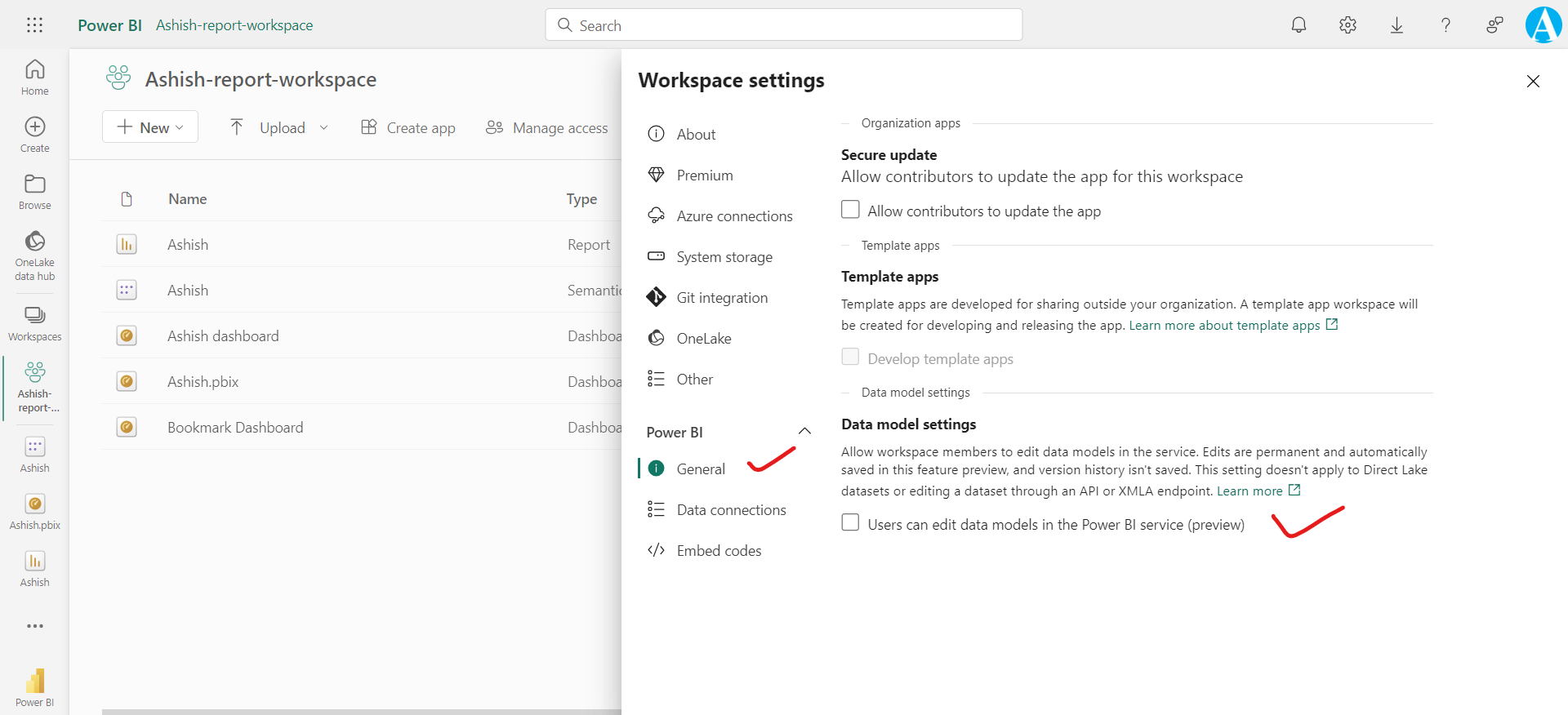
Delete a Report in Workspace
If we want to delete the report, in the list of reports in the workspace, hover over the report we want to delete, select More options (…), and choose Delete.
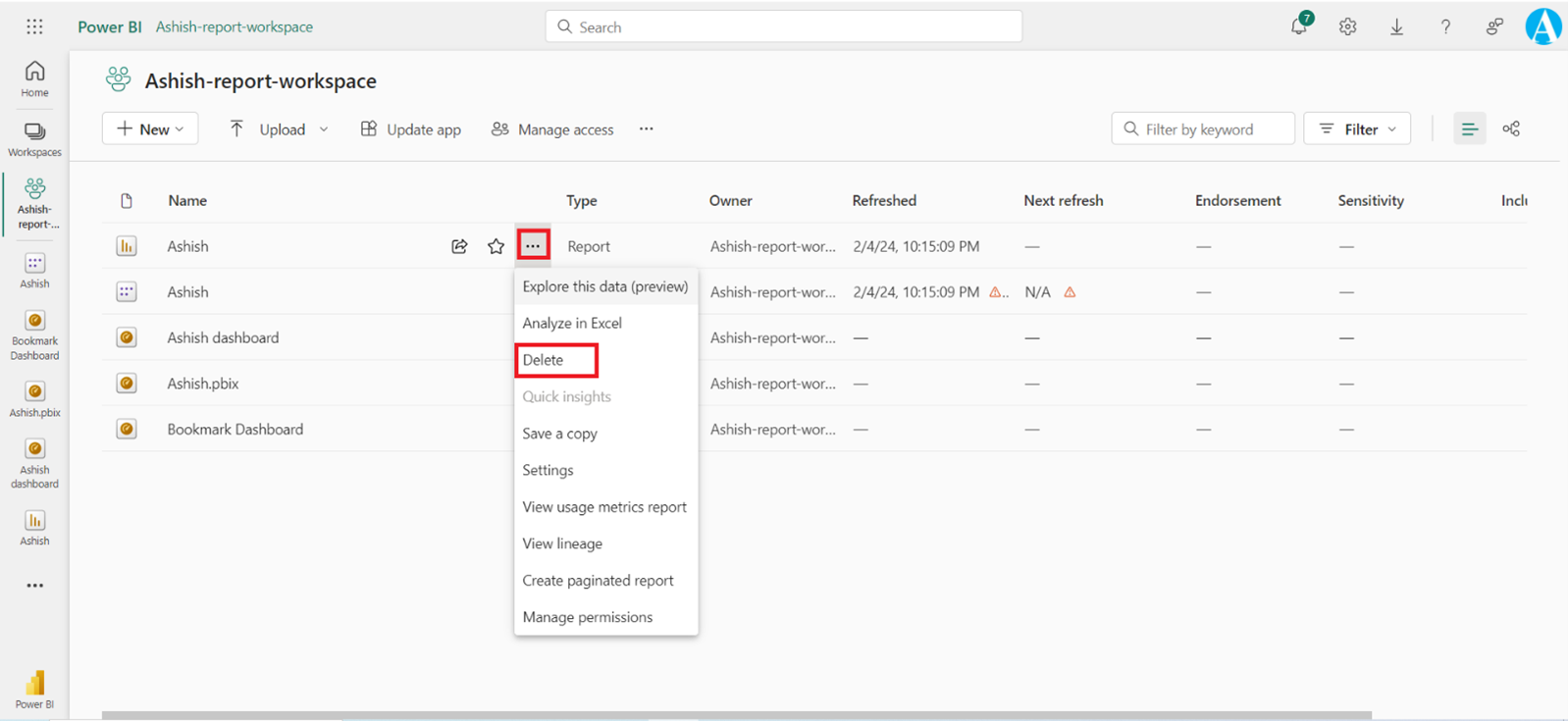
Note: Deleting a report doesn't delete the semantic model that the report is based on. Any visualizations that we pinned to a dashboard from the report are also safe. They remain on the dashboard until we delete them individually.
Permissions All the workspace users implicitly got the permissions on the semantic model lies in the workspace, also we can explicitly give permissions to the users.
